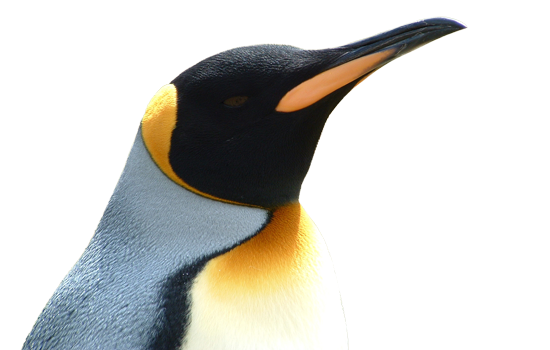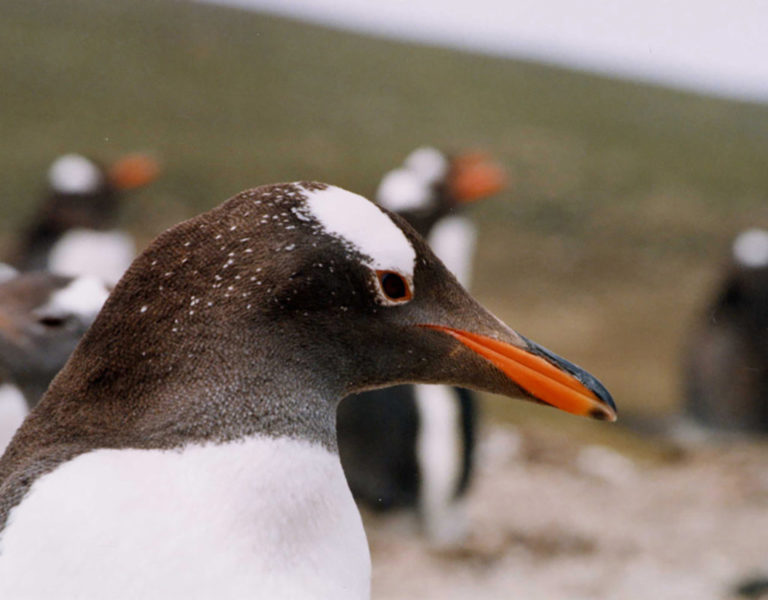
Gentoo

This is the second largest Falkland penguin, it has a distinctive white bar over the crown of the head, a long orange and black bill, a blue-black back and under parts silver-white, and orange feet. It is very inquisitive, although easily scared from its nest if approached to closely by humans. The gentoo penguin breeding sites are some of the easiest and most accessible to visit. The colonies can be up to 5km (3 miles) inland and reached by traditional, often circuitous, routes; known locally as penguin highways. The gentoo equivalent of rush hour occurs on their ‘highways’ in the early evenings when many penguins return from the day at sea. Breeding colonies range from 7 to 7000 pairs.

Vital Statistics
Pygoscelis papua
Height: 71-78 cm Length 78-84 cm
Weight: 5-8 kg Males weigh heavier than females
Life expectancy: 10-15 years in the wild
Breeding age: 2-5 years
Predators: Sea Lions are the main predators at sea. At the colony skuas and striated caracaras take eggs and small chicks.
Population
There are approximately 85 breeding colonies in the Falklands, although some do move from year to year. There are 17 on the outer islands, 32 on mainland West Falkland and 36 on mainland East Falkland.
In 2010, the Falkland Islands held the largest breeding population of Gentoo penguins in the world, with an FC census recording 121,500 breeding pairs. Numbers in the Falkland Islands do fluctuate, but have averaged about 100,000 pairs over the last 75 years.
Gentoo penguins are resident in the Islands throughout the year and distributed all around the coastline.
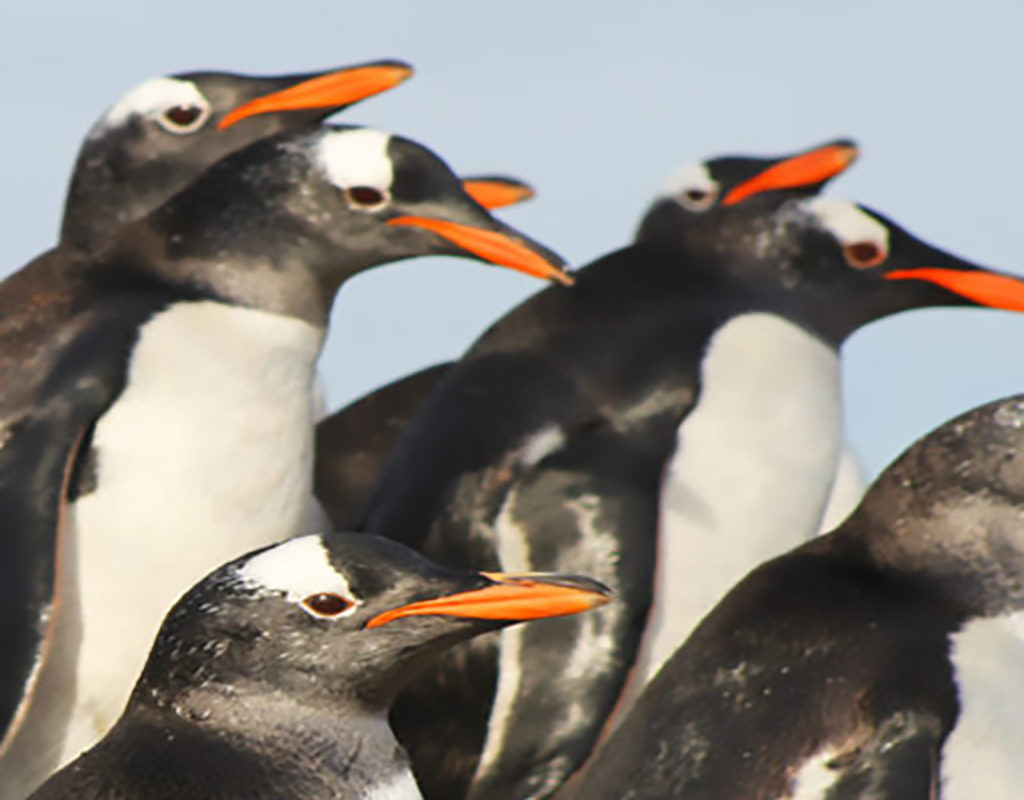
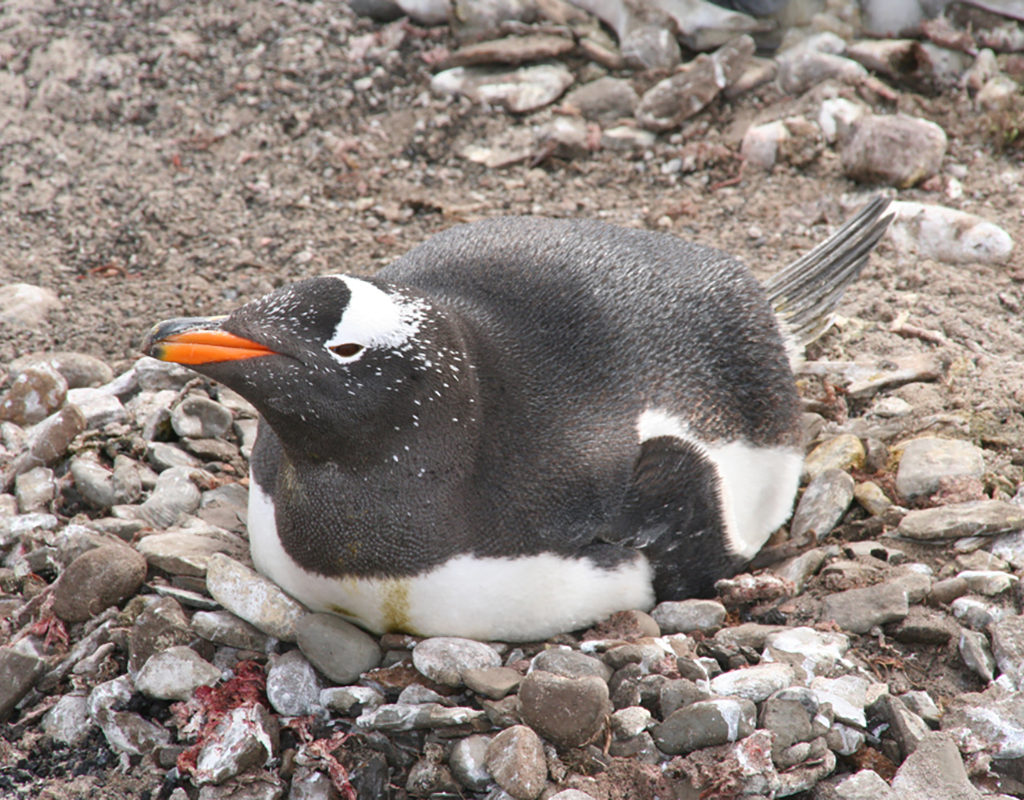
Breeding cycle
Nest building starts in September using diddle-dee from nearby plants, grasses, small stones or even hard lumps of mud. Two large round white eggs are laid in October. Chicks are brooded until they are 3-4 weeks old when they form small créches. The créches become larger as the chicks grow bigger, and eventually the chicks move away from the nesting site and towards the shorelines, often waiting on beaches for their parents to return from sea with food. The young are fully moulted by late January, and ready to go to sea in late February.
Gentoo penguin chicks engage in what is known as the ‘chick chase’ – where they must chase their parents to get fed. It is thought that this behaviour builds up strength of the chicks and also encourages them to venture towards the sea edge and eventually follow the adult birds out to sea.
Going to sea
Gentoo penguins are inshore foragers and generally do not venture more than 20km from the shores of the Falkland coast.
In the summer, whilst raising chicks, they leave on daily trips departing the colony at first light and generally returning from early evening onwards.
Gentoo penguins are opportunistic feeders with great variation in prey ratios between colonies.
In the Falklands, they feed on a variety of lobster krill and other crustaceans, but squid and fish (blue whiting) are also important food.
In the winter, gentoos remain around the Falklands coast and they may disperse further afield from their breeding colonies.

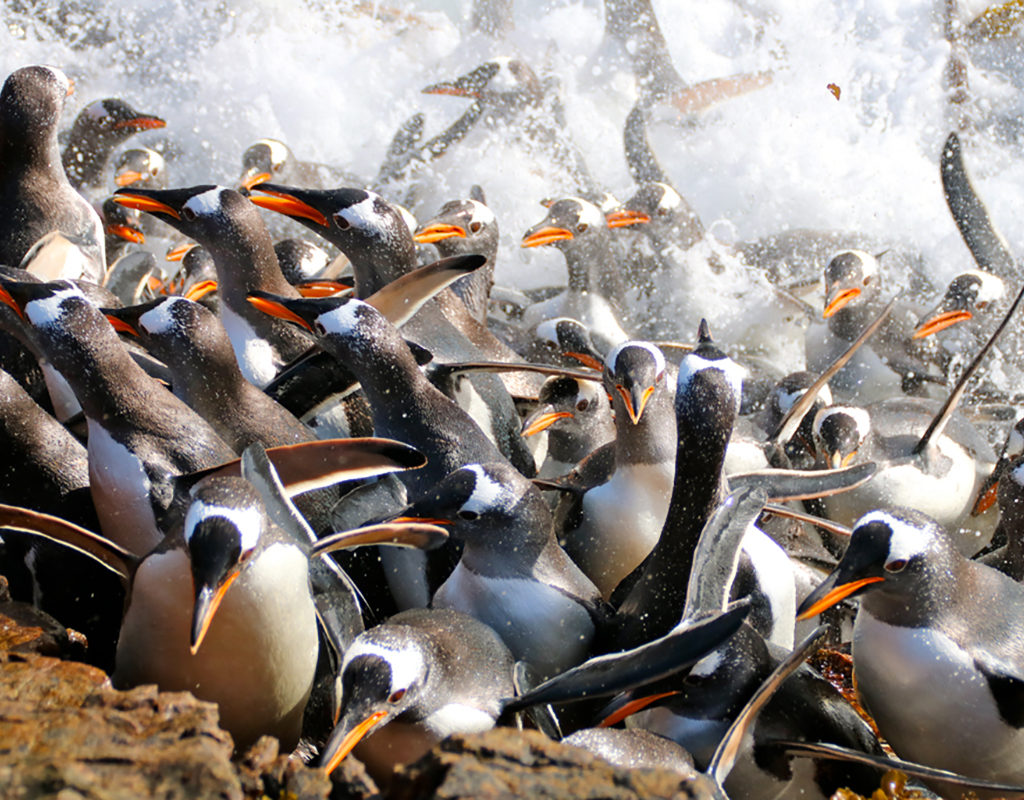
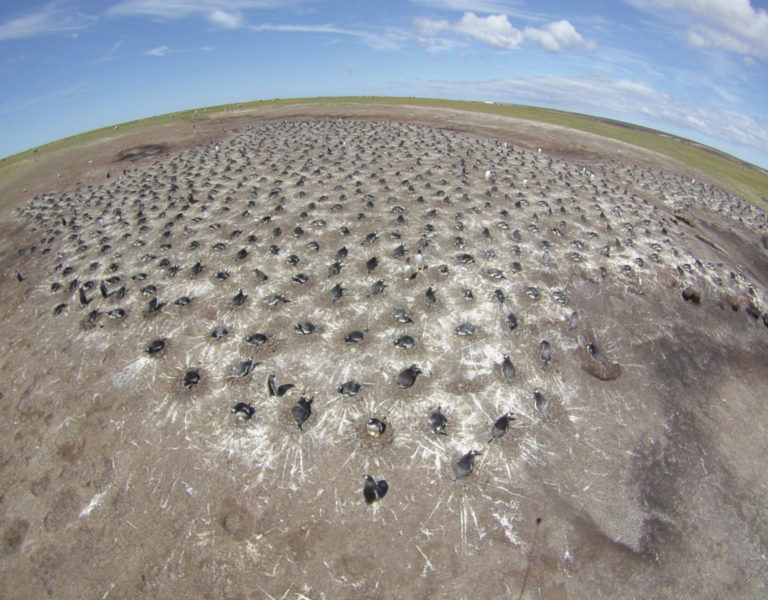
Conservation
The global population is around 387,000 pairs and indications are the trend is stable to increasing. The population appears to have increased in the south of its range, while annual monitoring of the Falkland Islands’ population indicates a positive trend over the past 25 years. Based on the overall population increase across its range, this species has been downlisted as IUCN Least Concern.
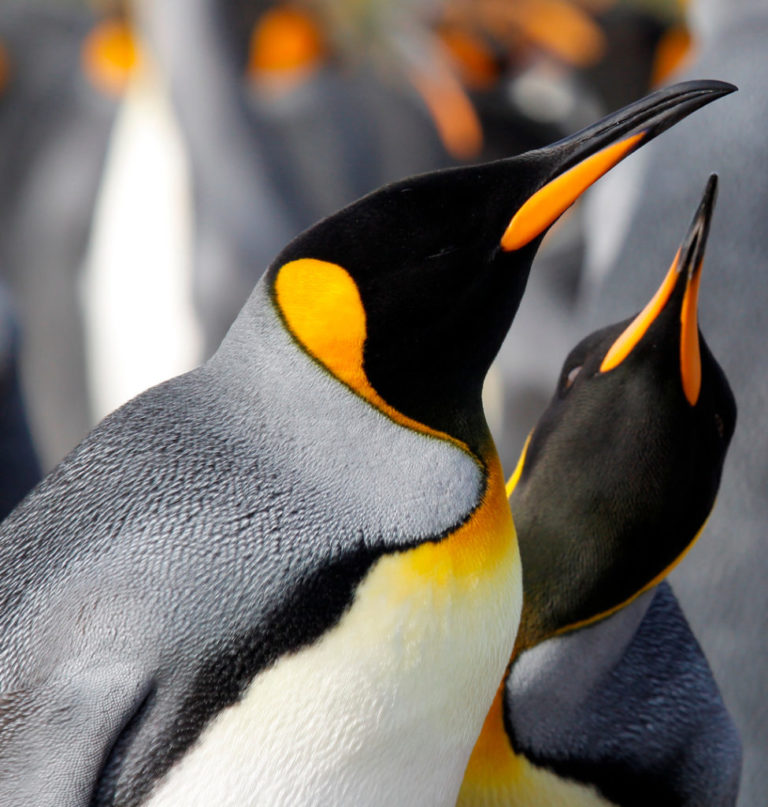
King
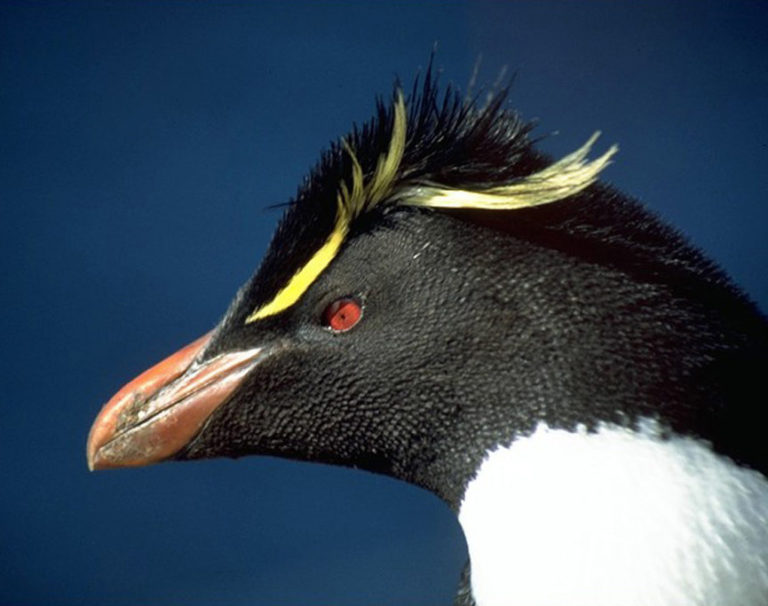
Rockhopper
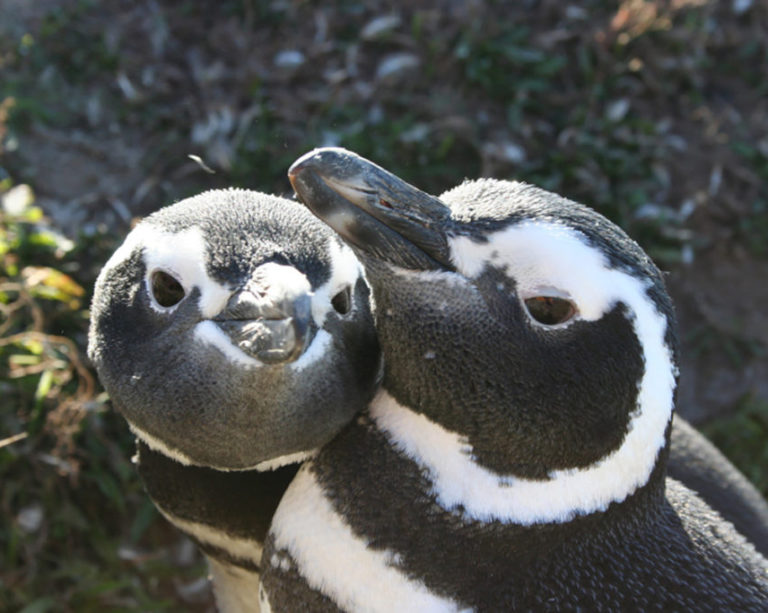
Magellanic

Macaroni
